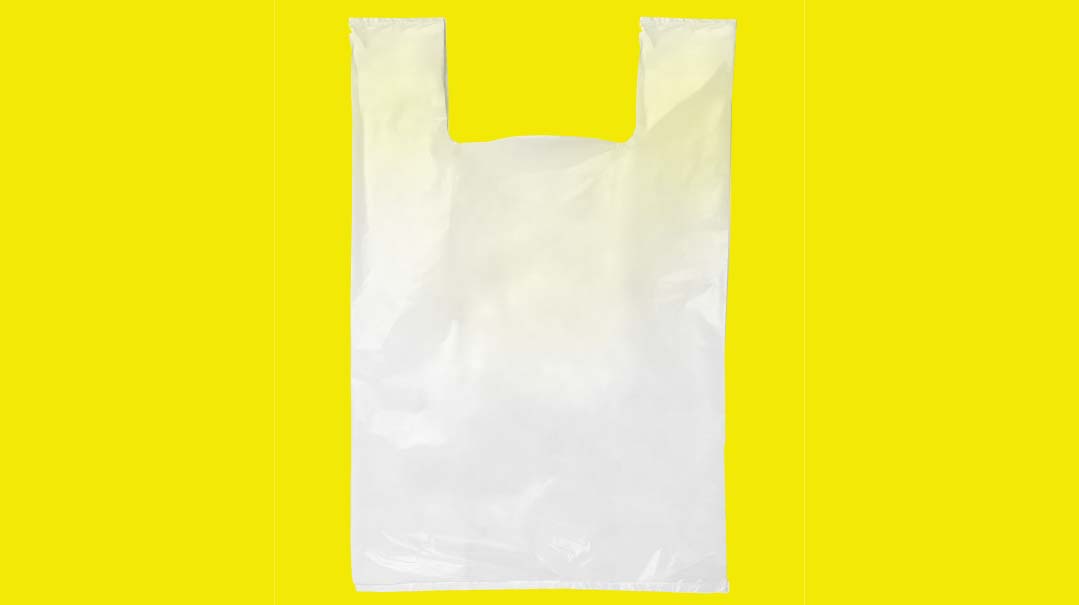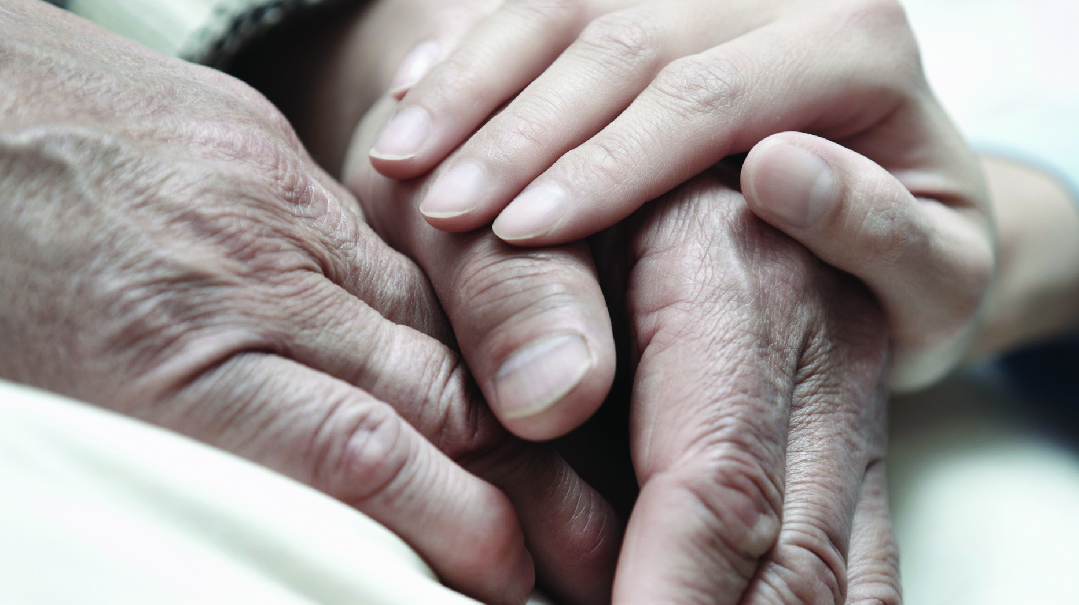Open Miracle


T he stress-hormone cortisol is a key player in the fight-or-flight response which is useful in emergency or disaster situations.
Like the hare in Aesop’s classic fable however cortisol doesn’t perform very well in the long haul. It’s a good jump-starter but at consistently elevated levels it wreaks havoc on the body.
Two and a half years ago my wife Sarah started feeling tired and weak all the time and experiencing constant muscle pain. She visited numerous doctors and underwent the gamut of medical tests but no one could offer any conclusive diagnosis. She pushed herself to continue working as a nurse in a Jerusalem hospital but when she became so weak that she had to be pulled into the van that would take her home after her shift I told her she had to quit her job.
One day she happened to visit a dermatologist for a skin issue that was unrelated to her other symptoms.
“Are you taking cortisone?” the dermatologist asked after noticing that her face was red and swollen.
“No ” Sarah answered.
“Then you should get yourself checked for Cushing’s ” he said.
None of the other doctors had thought to test for Cushing’s disease in which the adrenal glands are stimulated usually by a benign tumor on the pituitary gland to produce excess cortisol. But testing showed that the diagnosis of the dermatologist of all people was correct.
The pituitary gland is located near the brain just behind the eyes. This sensitive location makes surgery extremely dangerous. Yet leaving a tumor inside Sarah’s brain was also dangerous. In addition to the primary symptoms of fatigue weakness and muscle pain the elevated cortisol had also caused Sarah to develop diabetes and experience all sorts of unpleasant symptoms including swelling fluid retention weight gain memory and concentration issues high blood pressure breathlessness rapid heartbeat and sleep disturbances. At times she couldn’t even walk across the room.
Sarah took three MRI scans but surprisingly no tumor was visible on the resulting images. Blood samples drawn from near the brain showed however that there had to be a tumor near the pituitary gland.
Sarah’s endocrinologist prescribed medication to suppress the production of cortisol until surgery could be performed. But we were able to schedule surgery quickly so Sarah did not have to begin taking medicine.
A year and a half ago Sarah underwent surgery by one of Israel’s top neurosurgeons to remove the unmapped tumor. Sure enough the offending adenoma was found and successfully excised — or so we thought. When Sarah’s cortisol levels did not go down significantly after the surgery we realized that the tumor had not been removed entirely.
The next step was to try the medication the doctor had prescribed before the surgery. Initially, the medication worked well, and Sarah experienced less pain and fatigue. After about a year, however, the medication stopped working.
Sarah’s endocrinologist prescribed a second medication, one that was significantly cheaper than the previous one — 150 NIS (about $40) a month instead of 25,000 NIS (about $7,000) — but it was not available in Israel and had to be ordered from abroad, through our Kupat Cholim health fund.
Sarah started with a low dose of the medication, and the doctor raised the dosage gradually over several months, each increase taking place after a blood test showed that the medication was not harming the liver. But when the doctor raised the dose to ten pills a day, Kupat Cholim denied coverage, on the grounds that such a high dose was unheard of. They agreed to reinstate the medication only if the doctor could provide medical documentation showing that such a dose was acceptable.
In the meantime, we had no way of obtaining the drug in Israel. Sarah’s sister in the US obtained the medication for her there, but shipping took three weeks, and during that time Sarah had no medication.
The medication was not a real solution in any event, since it merely suppressed the symptoms and did not actually treat the underlying disease. Once again, we looked into options for surgery. This time, we needed the best — especially because few surgeons were willing to operate on Sarah.
After much research, we found a top neurosurgeon in Virginia who agreed to do the surgery. Fortunately, we had supplemental medical insurance that would cover the cost of the surgery, the hospitalization, and even the airfare.
We made all the arrangements: where we were going to stay, what we were going to eat, how we were going to transfer food to the hospital on Shabbos.
The deposit for the surgery had already been transferred into the hospital’s bank account and the plane tickets booked when a hospital representative called, a week before our scheduled departure, to notify us that the surgery date had to be postponed two weeks because the surgeon required a minor surgery himself.
We canceled our tickets and booked new tickets for two weeks later, which was shortly before this past Shavuos. Several days before the second flight, the hospital called again. “The doctor is not recovering well,” they informed us. “We are canceling all of his surgeries, and we don’t know if he’ll be able to operate anymore at all.”
They offered to have a different surgeon in the hospital perform the surgery, but that was not an acceptable option to us. We had chosen this surgeon because of his world-class reputation, and we weren’t interested in having a second-tier doctor take his place.
To make matters worse, a CT scan Sarah took at the time showed that her adrenal glands were enlarged and had starting producing adenomas of their own, because they were overworked.
The situation was alarming. And weird. No medication, a surgery twice canceled, a surgeon mysteriously out of commission. Maybe Hashem was trying to tell us something?
From the time Sarah had become ill, she continually wondered what the purpose of this nisayon was. “Hashem, just tell me what You want from me,” she cried countless times. “Tell me, and I’ll do it!”
With Matan Torah approaching, I thought about the healing that had occurred at Har Sinai, when all those in need of a refuah had been cured miraculously of their ailments. Knowing that a Yom Tov is not merely a commemoration of a past event, but rather an annual opportunity to access the same spiritual energies that spawned that event, I wondered if we, too, could tap into the powers of the day of Shavuos in order to merit a refuah. With all the standard avenues of medical intervention blocked, perhaps Hashem was sending a message to abandon the route of medical hishtadlus and embark on a path of spiritual healing.
We weren’t foolish enough to take such a drastic step without daas Torah, however.
I asked my son, who has connections with several gedolim here in Eretz Yisrael, to set up appointments for me to receive brachos and advice. He arranged for me to meet with a Yerushalmi sage and a Sephardi master of Kabbalah.
“Shavuos is in two weeks,” I told the Yerushalmi gadol. “Maybe we shouldn’t be doing hishtadlus, but rather waiting for a refuah on Shavuos?”
“That, you have to ask a gadol hador,” he said. “What I can tell you is that Shabbos is the source of blessing, and you should take upon yourselves to accept Shabbos early.”
A different son managed to arrange an audience for us with one of the gedolei hador that very night. Standing at the summit of the Torah universe, I began explaining the situation, and the gadol said, “Refuah sheleimah.”
I had not finished asking my question, though, so I forged on. “Maybe the final din will change on Shavuos, and we shouldn’t do anything until after Yom Tov,” I half-asked, half-suggested.
He nodded his head and said, “Correct.”
The gadol had uttered only three words, but both Sarah and I accepted his advice without any doubt. It was abundantly clear to us that Hashem was sending us on a path of spiritual growth, expecting us to trade medication and surgery for bitachon and increased connection to Torah. For Sarah, this represented an especially difficult switch, considering that she had worked for 25 years in hospitals, where doctors, medications, and operations rule the day.
The next day was our appointment with the Sephardi chacham. I told him that the gadol hador had advised us to wait and see what Shavuos would bring. “Should we just wait,” I asked, “or are there other spiritual measures we should be taking to bring about the refuah?”
“That’s something you have to ask the gadol hador,” he said with a smile, echoing the words of the Yerushalmi sage. “My understanding is that if you wish to access the healing powers of Shavuos, you have to have as much of a kabbalas haTorah on Shavuos as you possibly can. That includes a commitment to harbatzas Torah, too.”
He added that along with the spiritual hishtadlus, we should continue our medical hishtadlus as well.
“You mean after Shavuos?” I responded.
He conceded that we could wait until after Shavuos.
After speaking to these three gedolim, I discussed what they had told me with my own rosh yeshivah, who is a scion of the Brisker dynasty.
“When the Jews left Mitzrayim, they were at the 49th level of tumah,” my rosh yeshivah replied, “and they slowly raised their madreigah until they stood at Har Sinai. At that point, they were completely detached from Mitzrayim, so the din that applied to them in Mitzrayim was no longer relevant. Similarly, a person who experiences kabbalas haTorah today is no longer at the same madreigah, so the person can experience a refuah because the din that applied to him at his previous madreigah is no longer relevant.”
He paused. “This is no easy task,” he cautioned. “Kabbalas haTorah is not a simple thing.”
The two-week period from then until Shavuos was one of intense spiritual growth for Sarah and me. To demonstrate our renewed commitment to harbatzas Torah, we arranged a shiur in hilchos Shabbos for women, which Sarah made prodigious efforts to attend. Other than that, we did not take on a list of kabbalos or embrace a collection of segulos. Rather, we resolved to be more aware of Hashem’s presence in our lives and grateful for every one of His blessings.
With each brachah we recited, the words “Baruch Atah Hashem” took on new meaning. Baruch. Atah. Hashem. You are here, You can do anything, and no one but You has any power. You created this fruit and the hand that holds it and the mouth that savors its symphony of juice, pulp, and flavor.
We were going through the same motions of Torah life as before, except that now, it was as though a curtain had lifted, revealing in stunning clarity the Force that lay behind absolutely everything, from the smallest breath to the greatest gust of wind. Every frum person subscribes to this belief, but the difference between subscribing to it and living it was the difference between hearing canned recorded music and experiencing a philharmonic orchestra — the orchestra of an entire universe singing praise to its Creator.
Amid the strains of this orchestra’s music, the answer to Sarah’s plaintive cry of, “Hashem, just tell me what You want from me,” rang out thunderously. “Come close to Me, my child,” it said. “I am your Abba, and I want you to know Me and turn to Me when you are in need!”
Gone was the desperate plea of, “Tell me, and I’ll do it!” — a plea that resonated with overtones of “Just stop making me suffer” and “How can I appease You and get You to do my will.” In its place was a peaceful acceptance of Hashem’s chosen path for getting Sarah — and me — to recognize His reassuring presence. Even in the midst of suffering.
“Hashem, help me make Shabbos,” Sarah would beg, when she felt hardly able to lift herself out of bed on a Friday morning. Some days, Hashem would give her the strength, and she would thank Him for it; some days, He wouldn’t, and she would thank Him for that, too.
Sarah’s illness became a bridge, instead of a barrier, to closeness to Hashem. Medications, doctors, surgeries — these were all distractions, discordant notes that blurred the symphony’s perfection. Of course we didn’t need them. In taking them away, Hashem had given us so much more.
We exited Shavuos with a feeling of elevation and serenity the likes of which we had never experienced before, along with the conviction that the refuah we sought was already in place. A blood test corroborated this: For the first time in two and a half years, Sarah’s cortisol level was normal. After three weeks of zero medication. It was an open miracle.
We were not surprised in the least.
The surprise came several days later, when we received the results of a different test, one that was lengthier, more complex, and more accurate than the blood test. Thankfully, I saw the results before Sarah did. Her cortisol levels were over 15 times higher than the highest normal level. The blood test had given false results.
I didn’t know how to break the news to Sarah. And here we had been so certain that we had experienced a miracle!
“Sarah,” I said, before handing her the paper with the results, “I recently heard in a shiur that Adam Harishon ate from the Eitz Hadaas because he couldn’t handle the intensity of his closeness to Hashem. At Har Sinai, too, Klal Yisrael begged Moshe to convey Hashem’s words to them, because they couldn’t bear to experience Hashem’s direct communication with them. So we see that intense closeness to Hashem isn’t good for you if you’re not ready for it.
“We were expecting a nes,” I continued. “We really believed it was going to happen, and we reached a level of closeness to Hashem that we had never experienced before. But maybe a nes wasn’t going to be good for us.”
With that, I handed Sarah the results.
She gasped, as though someone had punched in her in the stomach. And then she started crying.
At that moment, another thought occurred to me. “You know, Sarah,” I reflected, “we’ve done a lot of growing these last few weeks, and we’re not in the same place we were before. But all along, in the back of our minds lurked the thought that if we don’t get a miraculous refuah on Shavuos, we can always go back to looking for a different surgeon. Much as we expected a nes, we weren’t really on the level of 100-percent bitachon. Almost no one is, and that’s why people have to do hishtadlus. Apparently, our avodah is still to do hishtadlus — but this time, to do it differently, with the unshakeable belief that our hishtadlus is just a way of camouflaging the open miracle when it happens.”
Through her tears, Sarah nodded.
Shortly thereafter, Kupat Cholim reinstated Sarah’s medication, and she is once again faithfully taking her myriad pills every day — this time, with the conviction that the pills have power only because Hashem decreed that they should.
We had always believed that Hashem is the Healer, and that all refuah comes through Him. Yet at the same time we had believed that the refuah came through the medication, through the doctors, through skillfully executed surgeries. Now, our understanding was refined: The field of medicine exists solely as a smokescreen for the healing that Hashem provides. It is His will that we make the miracle look unmiraculous, and for that reason — and no other — we do hishtadlus.
We’re looking, again, for a surgeon who is qualified — and willing — to operate on Sarah. But the tenor of our quest this time is entirely different. We are approaching the task of arranging the surgery with the knowledge that when the refuah happens, it will be a miracle, exactly as the gedolim described.
The spiritual efforts we made, in the process of reaching the point where we recognized that the refuah would be a miraculous one, were not in vain. They propelled us to a new plateau, from which we begin phase two of this nisayon.
That is the end of our story. What will happen next, we don’t know, but in terms of our spiritual journey, what the future holds medically matters little. Everything that has happened to us to date was for the purpose of bringing us to the spiritual level we have achieved thus far, and whatever happens next will be for the similar purpose of advancing our spiritual growth further yet.
The miraculous turnaround we anticipated has already happened: We are no longer the same people we were before. And maybe we’ll soon merit to see another miracle, one that will be no less miraculous for all its being hidden.
(Originally featured in Mishpacha Issue 667)
Oops! We could not locate your form.













